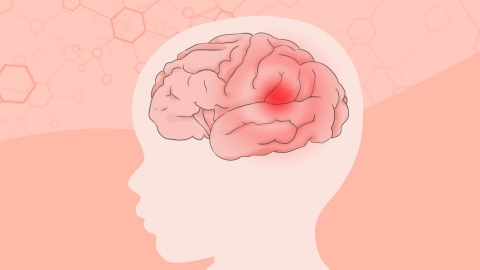What to do about a blocked cerebral blood vessel
In general, cerebral vascular occlusion may be caused by long-term sleep deprivation, prolonged sitting, hyperlipidemia, hypertension, cerebral atherosclerosis, and other factors. It is recommended to seek timely medical consultation to identify the exact cause and then improve the condition under a doctor's guidance through general treatment, medication, and other methods. Detailed analysis is as follows:

1. Long-term Sleep Deprivation: Prolonged staying up late disrupts the body's metabolic rhythm, affects blood circulation, and increases blood viscosity, which can easily induce cerebral vascular occlusion. Adjust your sleep schedule by maintaining a fixed sleeping time daily, ensuring 7-8 hours of sleep, avoiding sleeping after midnight, reducing the use of electronic devices before bedtime, and creating a favorable sleep environment.
2. Prolonged Sitting: Extended periods of sitting slow down the body's blood circulation, causing blood to stagnate in the vessels, which can easily lead to thrombosis and cause cerebral vascular occlusion, commonly seen among office workers and the elderly. Get up and move for 5-10 minutes every 30-40 minutes of sitting, engage in light activities such as walking or stretching. Perform at least 150 minutes of moderate-intensity aerobic exercise weekly, such as jogging or swimming.
3. Hyperlipidemia: Excessively high cholesterol and triglyceride levels in the blood can deposit on the vessel walls forming plaques, gradually leading to narrowing and occlusion of cerebral vessels. Patients should follow medical advice to use lipid-regulating medications such as atorvastatin calcium tablets, rosuvastatin calcium tablets, simvastatin tablets, etc.
4. Hypertension: Poor long-term blood pressure control can damage the cerebral vascular endothelium, promote lipid deposition to form plaques, increasing the risk of occlusion. Patients should follow medical advice to use antihypertensive medications such as amlodipine besylate tablets, valsartan capsules, nifedipine controlled-release tablets, etc.
5. Cerebral Atherosclerosis: Lipid deposition and fibrous tissue proliferation in cerebral vessel walls lead to vascular narrowing and hardening, eventually causing occlusion, accompanied by symptoms such as dizziness and limb numbness. Patients should follow medical advice to use medications such as aspirin enteric-coated tablets, clopidogrel hydrogen sulfate tablets, atorvastatin calcium tablets, etc., to prevent thrombosis and stabilize plaques.
Maintain a low-salt, low-fat diet daily, eat more fresh vegetables and fruits, quit smoking, limit alcohol consumption, control body weight, avoid obesity, and reduce the risk of cerebral vascular occlusion through regular exercise and a healthy lifestyle to maintain brain health.









